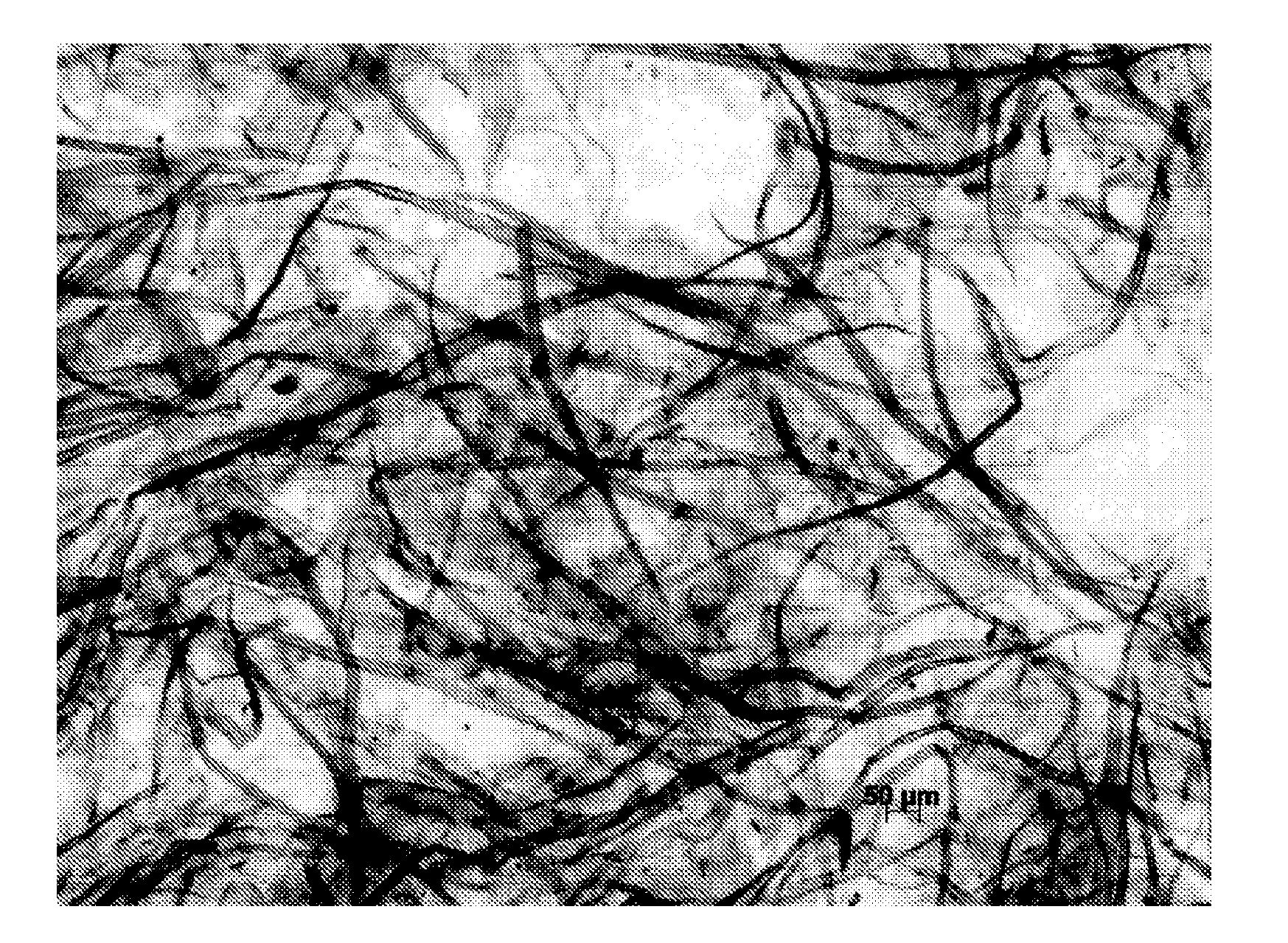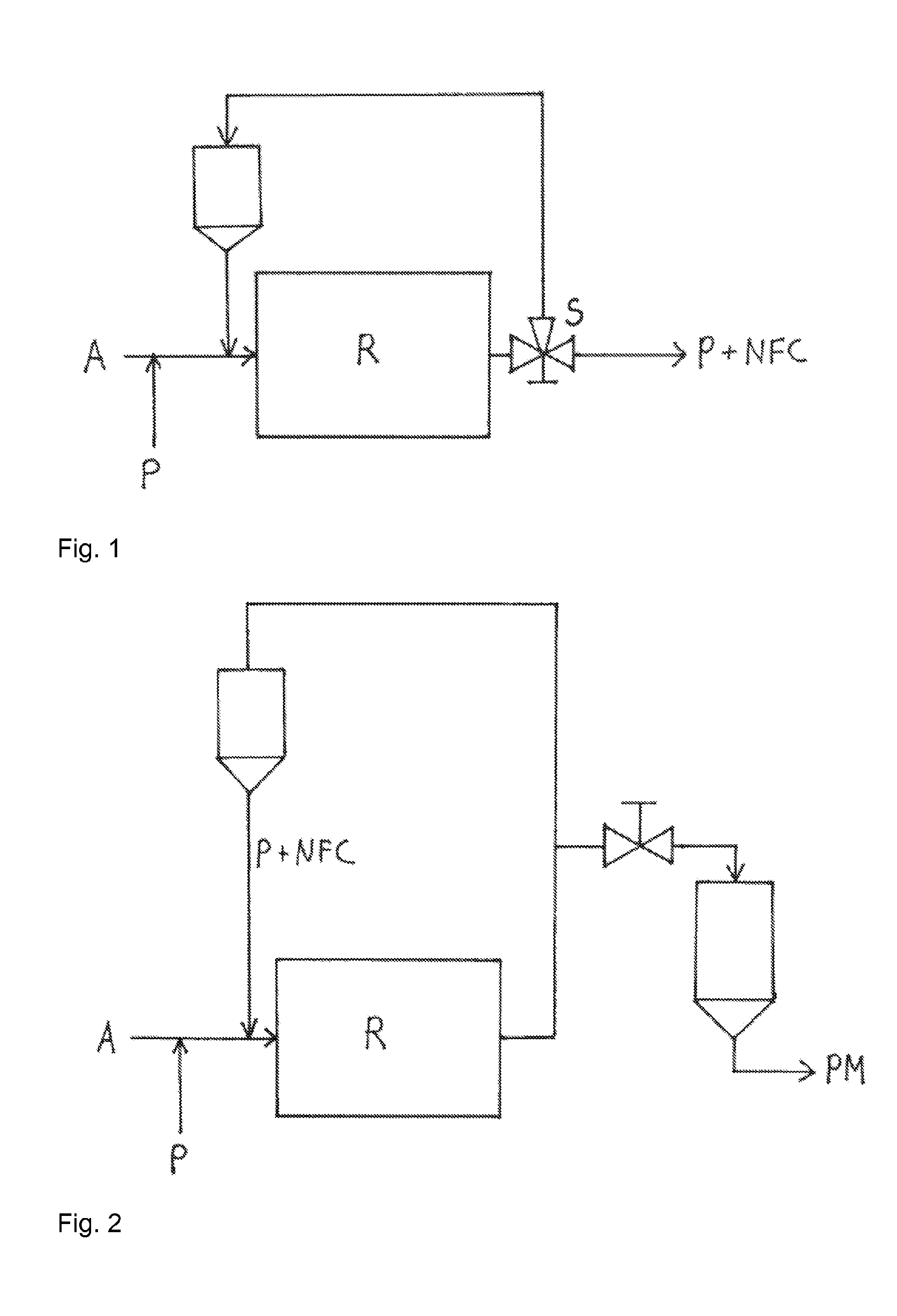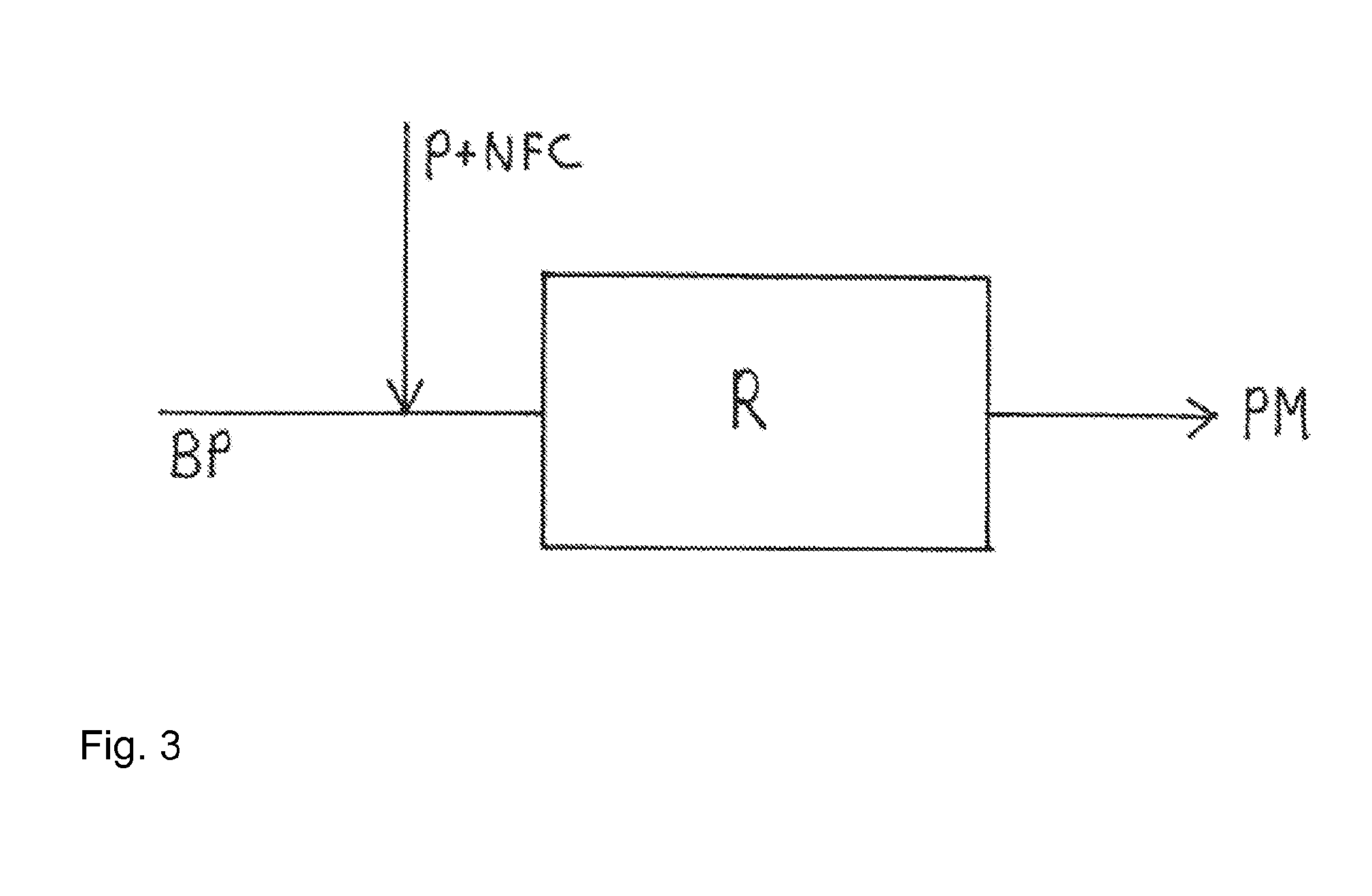Method for making nanofibrillar cellulose and for making a paper product
a nanofibrillar cellulose and paper product technology, applied in the field of making nanofibrillar cellulose and making paper products, can solve the problems of high energy consumption of mechanically disintegrating fibers, high cost, and high cost of nanofibrillar cellulose production, and achieve the effect of reducing the cost of manufacturing and reducing the cost of production
- Summary
- Abstract
- Description
- Claims
- Application Information
AI Technical Summary
Benefits of technology
Problems solved by technology
Method used
Image
Examples
Embodiment Construction
[0025]In the present application, all percentages are by dry weight, if not indicated otherwise.
[0026]In the present application, all results shown and calculations made, whenever they are related to the amount of pulp, are made on the basis of dried pulp.
[0027]In the present application, the term “fibrous component” or “fibrous material” is a common designation for material in the form of fibers and material derived from fibers, such as fibrils.
[0028]Cellulose is a renewable natural polymer that can be converted to many chemical derivatives. The derivatization takes place mostly by chemical reactions of the hydroxyl groups in the β-D-glucopyranose units of the polymer. By chemical derivatization the properties of the cellulose can be altered in comparison to the original chemical form while retaining the polymeric structure.
[0029]Both the cellulose pulp used as the auxiliary pulp in the refining stage and the basic pulp can be from any cellulose raw material source that can be used...
PUM
| Property | Measurement | Unit |
|---|---|---|
| length | aaaaa | aaaaa |
| length | aaaaa | aaaaa |
| width | aaaaa | aaaaa |
Abstract
Description
Claims
Application Information
 Login to View More
Login to View More - R&D
- Intellectual Property
- Life Sciences
- Materials
- Tech Scout
- Unparalleled Data Quality
- Higher Quality Content
- 60% Fewer Hallucinations
Browse by: Latest US Patents, China's latest patents, Technical Efficacy Thesaurus, Application Domain, Technology Topic, Popular Technical Reports.
© 2025 PatSnap. All rights reserved.Legal|Privacy policy|Modern Slavery Act Transparency Statement|Sitemap|About US| Contact US: help@patsnap.com



